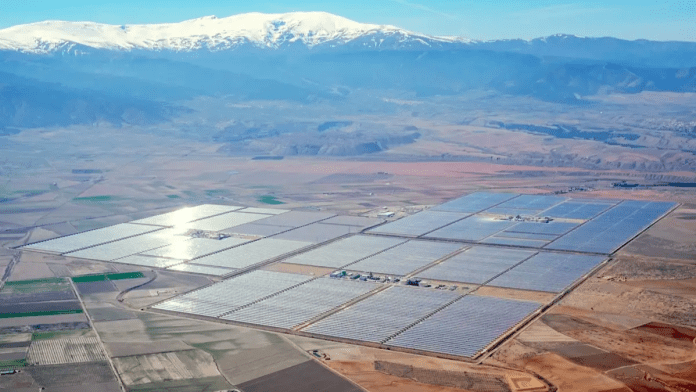🕒 Last updated on July 11, 2025
In a groundbreaking moment for clean energy, solar power has officially become the number one source of electricity in the European Union. The most recent data shows that in June 2025, solar energy accounted for 22.1% of all electricity generated in the EU. This marks the first time ever that solar has overtaken not only coal and gas but also nuclear power.
Solar Power Shines Brightest Across EU
The rise in solar production is being credited to a mix of new solar panel installations and several weeks of bright, sunny weather across the continent. Countries across Europe saw a jump in their solar output, with at least 13 EU member states reaching their highest monthly levels on record.
The Netherlands stood out by generating 40.5% of its electricity from solar panels, the highest among EU countries. Greece followed closely behind with 35.1%. Other nations, including France, Italy, Hungary, Portugal, Belgium, Slovakia, and Croatia, also hit new records for solar power production.
This solar success story comes at a time when Europe is facing more frequent and intense heatwaves. In May and June, much of the continent experienced unusually high temperatures, which increased the demand for electricity as people turned to fans and air conditioners to stay cool. Solar power played a key role in meeting this demand, helping to prevent blackouts and ease pressure on the grid.
Another major reason for this solar boom is public support. Across the EU, citizens continue to back clean energy solutions. Almost 90% of Europeans are in favor of the EU taking additional steps to increase the use of renewable energy. People are seeing the real-life benefits of solar—lower energy bills, cleaner air, and more control over where their power comes from. Rooftop solar panels are now common in many places, giving households a direct way to save money and help the environment.
Many communities are also joining together through local energy projects. These projects often offer shared ownership, discounted energy rates, or local job opportunities. When people feel directly involved, these initiatives tend to thrive—and they are helping solar capacity grow faster than ever.
Coal Power Drops to Record Lows
While solar power was climbing to new heights, coal was falling fast. June 2025 had the lowest monthly percentage of coal-derived electricity in the EU, at just 6.1%. This is a sharp drop from the 8.8% recorded in June 2024.
Two countries that have long depended on coal, Germany and Poland, both showed big changes. Only 12.4% of Germany’s electricity was produced using coal, which is a record low. In Poland, coal still made up a large share of power generation at 42.9%, but this too was the lowest level the country has seen.
Other countries such as Czechia (17.9%), Bulgaria (16.7%), and Denmark (3.3%) also recorded their lowest-ever use of coal for power generation. Most impressive of all, ten EU countries didn’t use any coal power at all last month. Ireland officially closed its last coal power plant on June 20, completing its transition away from coal. Spain and Slovakia have also announced plans to end coal use by the end of this year.
This decline in coal usage is a major step forward for Europe’s clean energy transition. Of all the fossil fuels, coal is the most polluting. Cutting it out of the energy mix helps to reduce harmful emissions, improve air quality, and slow down climate change.
Fewer coal plants also mean fewer health problems related to air pollution and a lower risk of energy price spikes linked to fossil fuel markets.
Wind and Solar Break Records Together
It’s not just solar making waves—wind power has also been setting records. In both May and June 2025, wind turbines produced nearly 16% of all electricity in the EU. This is the highest-ever share of wind energy for those months.
Together, wind and solar accounted for well over a third of the EU’s total electricity. These clean energy sources are helping to replace fossil fuels while offering more price stability and environmental benefits.
Copper industry rocked by 50% Trump tariff—EVs, data centers brace for impact
Part of this growth is coming from creative projects across the region. For example, researchers say that many of Europe’s old coal mining areas could be turned into huge solar farms. One study shows that if even a portion of these unused sites were developed, they could generate enough electricity to power an entire country like Germany.
These large-scale transformations are helping build a new kind of energy system—one that is cleaner, more local, and more stable. Community solar farms and neighborhood energy projects are also becoming more common. They allow everyday people to take part in the clean energy shift, either by owning a piece of the project or by saving on their monthly bills.
Despite this good news, fossil fuels still provided about 25% of the EU’s electricity in June. While that is much less than in past years, it shows that the transition is still ongoing. More work will be needed to replace fossil fuels entirely, especially during mornings, evenings, and cloudy or windless days.
Even so, the numbers show that a major shift is already underway. With solar and wind both setting new records, Europe is proving that clean energy is no longer a dream of the future—it is powering lives today.

